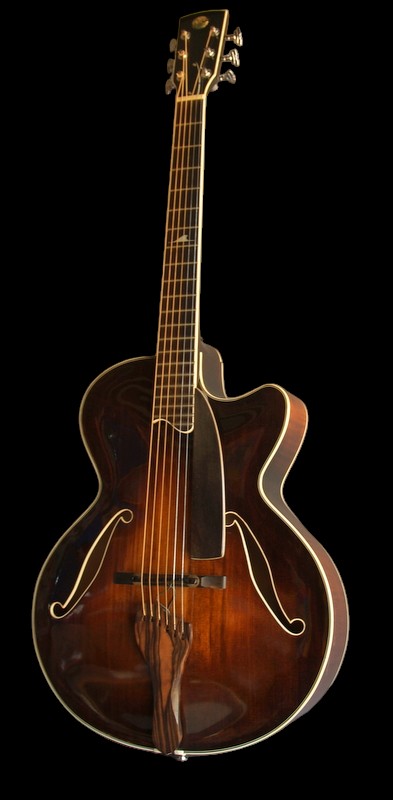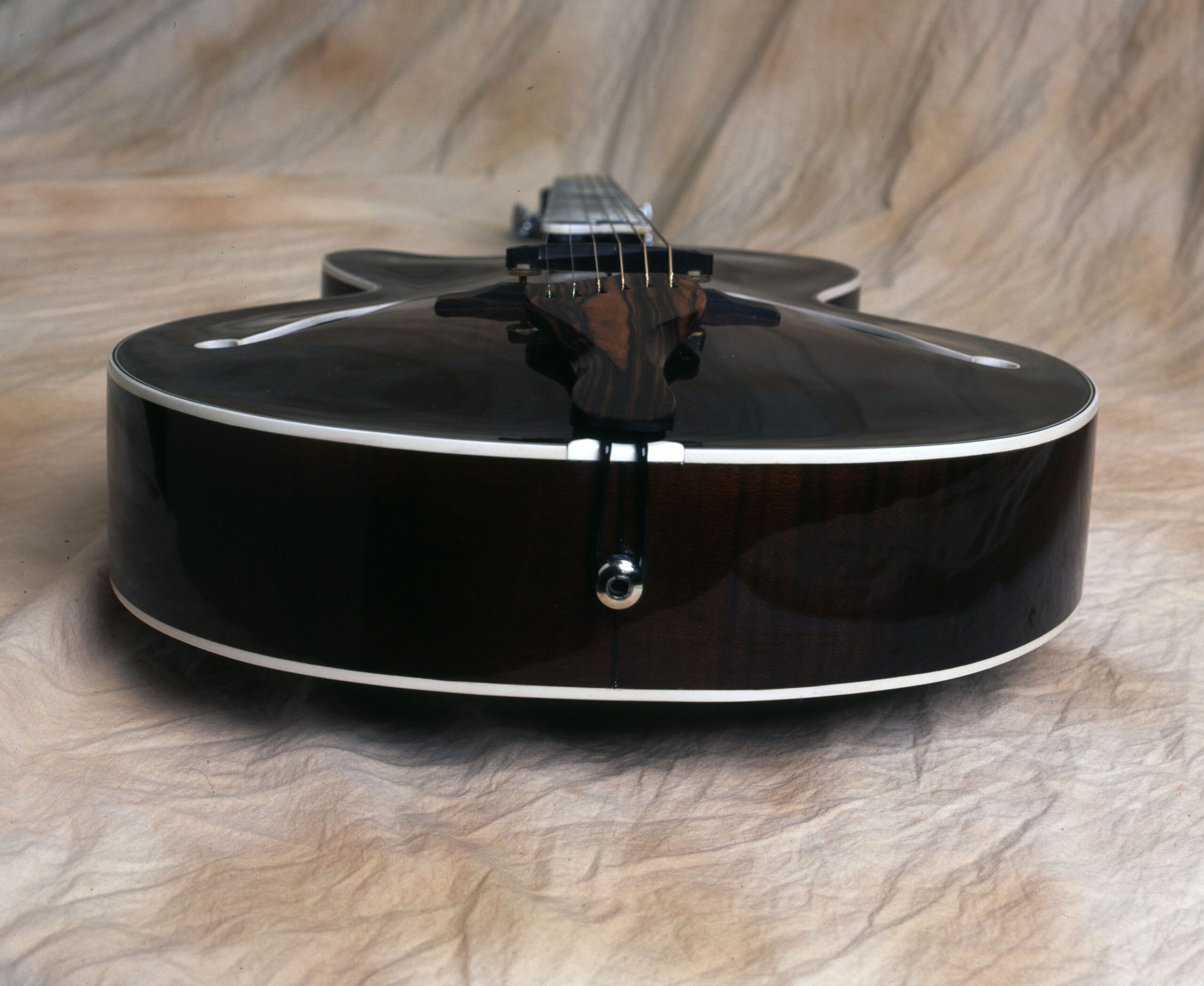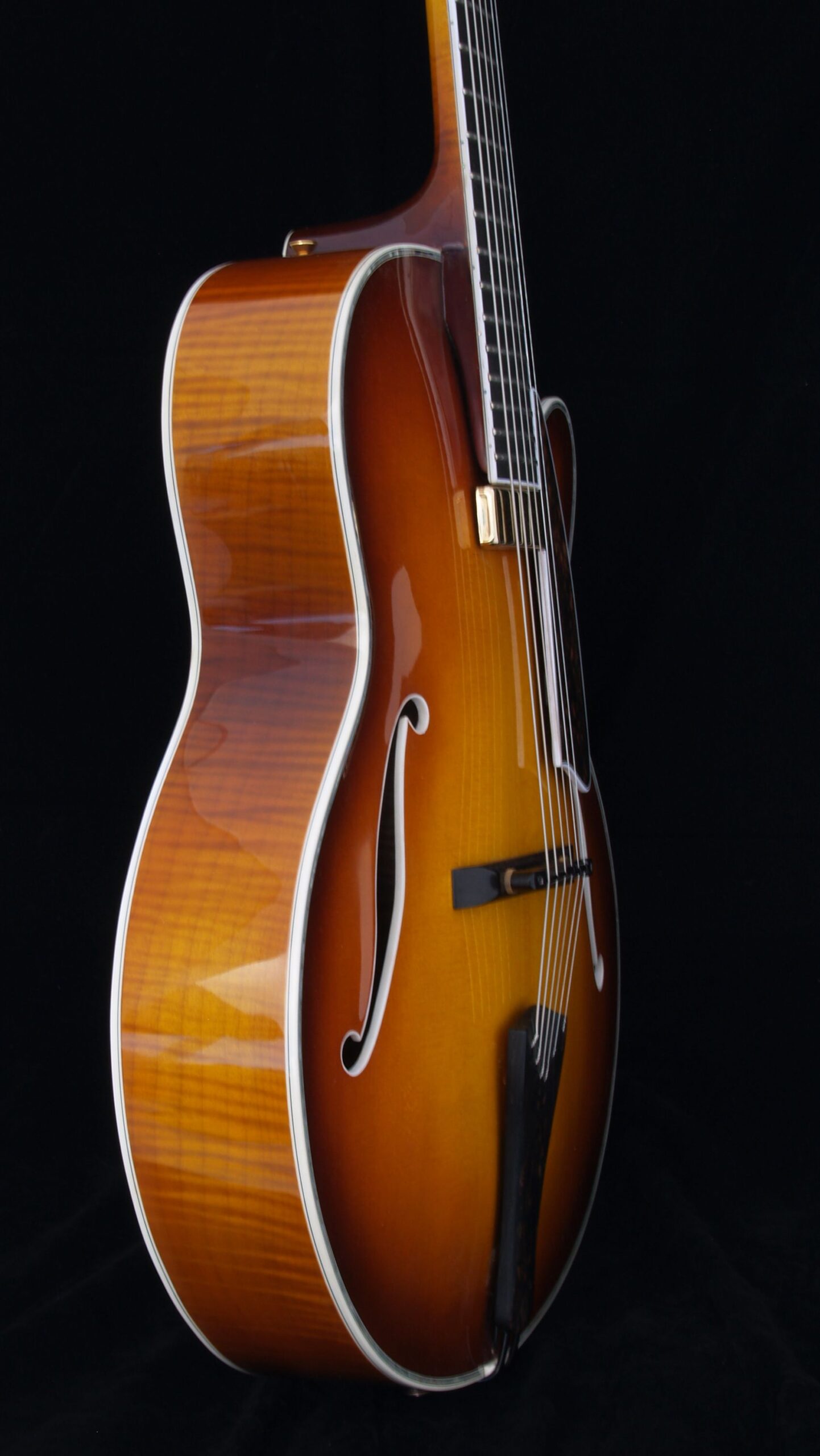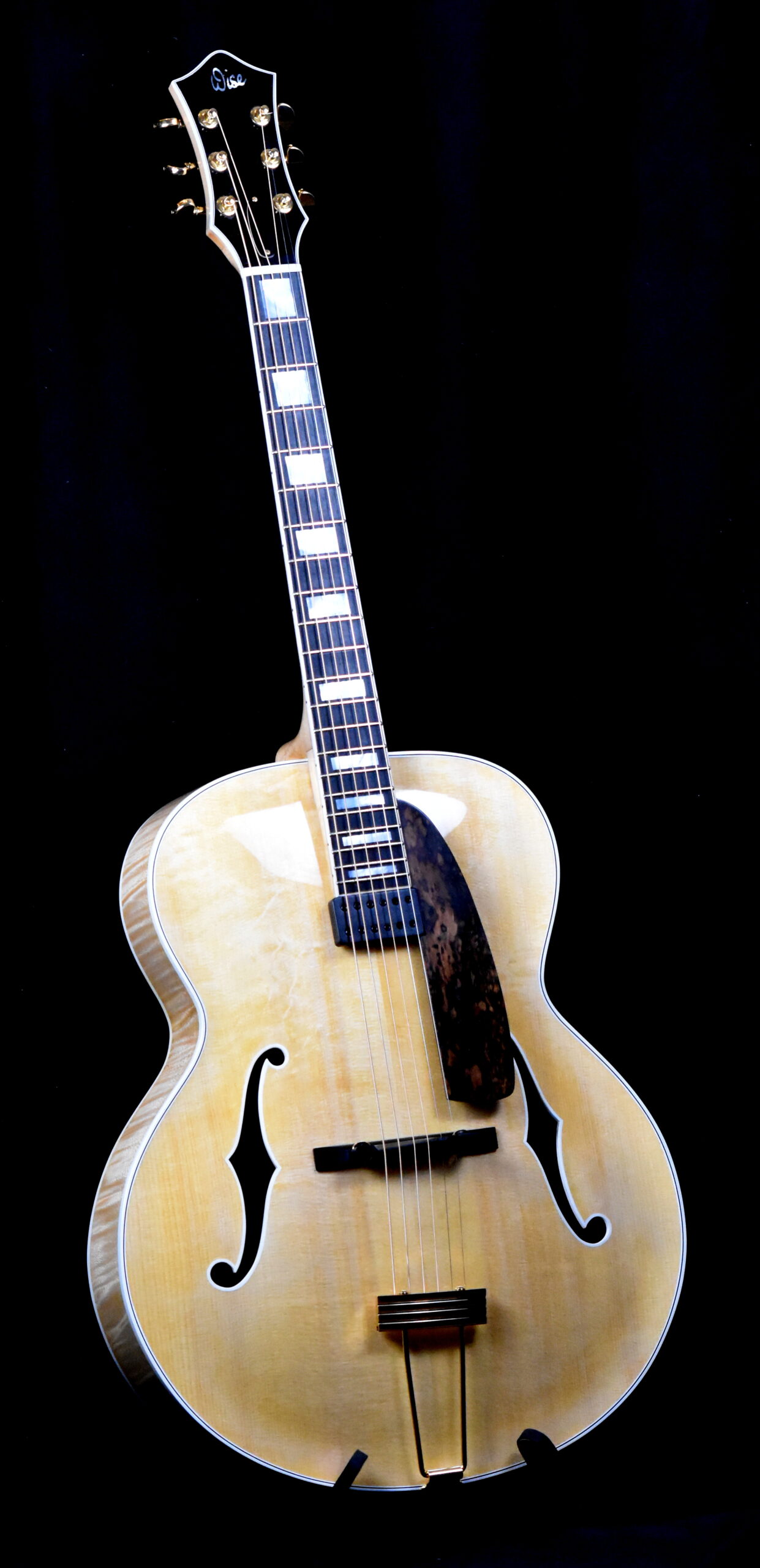Archtop Models
In 1925 consultant to Gibson Guitars, Lloyd Loar designed his L5 Master Model Guitar. He was building on the early work of Orville Gibson, founder of Gibson guitars. Orville believed he could make superior instruments by cutting and carving the top and back of plucked stringed instruments into arched plates as violin makers had done for centuries. Loar’s L5 had two f holes like the violin family, and two tone bars, fitted and glued like the violin bass bar. There was no soundpost to support the bridge. The feet of the bridge sit on top of each of the tone bars for support. The result for Loar was a guitar which was noticeably louder than existing models, with more projection. Although very expensive for its time, the L5 was adopted by guitarists and banjo players for use in band rhythm sections, to some extent replacing the banjo in that role. My 16″ archtop is built to emulate the sound of the 1920s L5. I often use a cutaway, although the original L5 had a 14 fret neck with no cutaway. I use more modern bridge, pickguard and tuners than the current replicas being built.
17" Archtops
To achieve more volume archtops were built bigger , wider and shallower in the body. Gibson, Epiphone and D’Angelico all ended up making 18″ wide acoustics which sat at the front of big bands into the 1940s and 50s. I have been building 17″ archtops for many years as dedicated acoustic guitars to which suspended pickups can be added. I avoid compromising the acoustic integrity of these by attaching pickups or controls to the top of the guitar. There are plenty of factories doing that. I use European Cello woods which I have seasoned for many years. The tone and projection is extraordinary.




